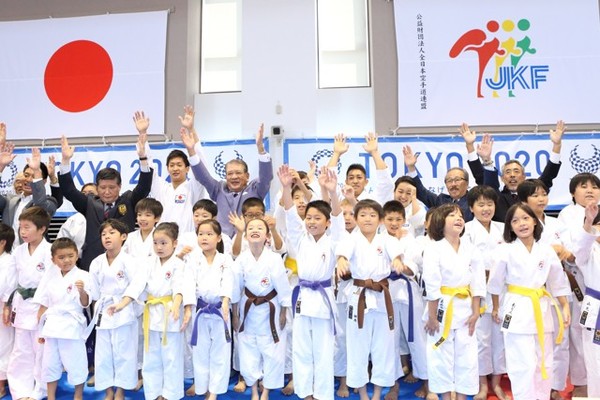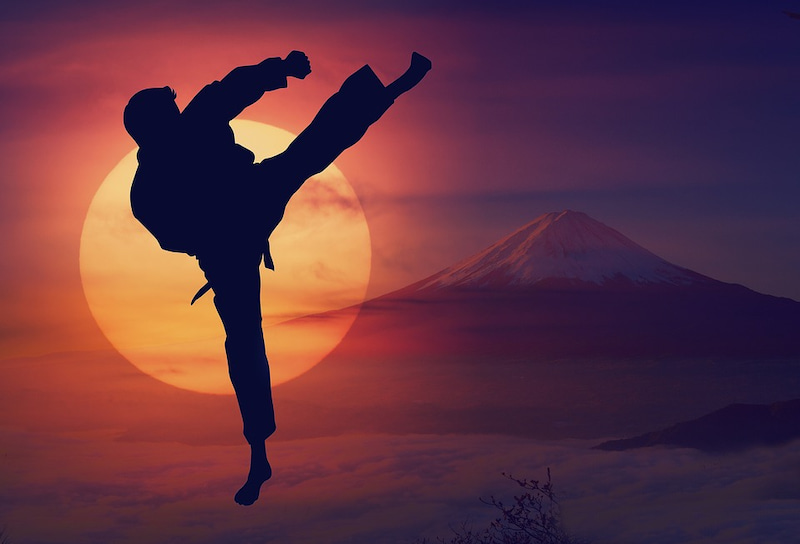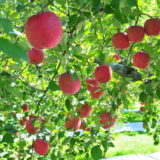What is Karate?
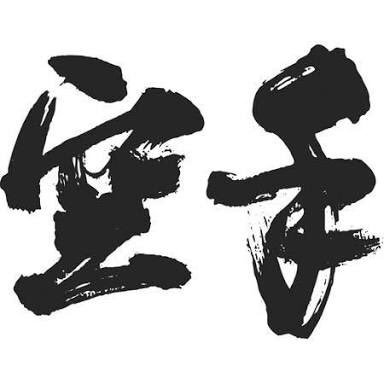
Karate is a martial art and martial art that originated in Okinawa during the Ryukyu Kingdom period and is characterized by striking with fists.
There are several theories on the origin of karate, such as that karate was imported from 36 families of the Kume clan, another is that it developed from the “Maikata” another is that it developed from Okinawan sumo, and the other is that it originated from jujutsu introduced from the Japanese mainland. Kata or form and kumite or opponent are the basic structure of karate, and the basic structure is to practice both of them.
“Kata” or Form of Karate
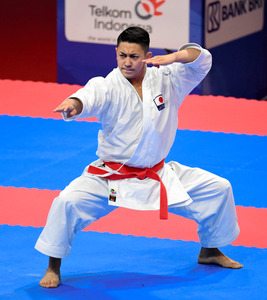
One of the characteristics of karatedo is its traditional “Kata”. Kata is a form of karate. The “Kata” of karate is performed by one person, and regardless of the individual’s physical strength, ability, age, sex, or innate qualities, karate can be practiced at one’s own pace according to the ability and physical strength of the individual. This is one of the major characteristics of Karatedo that other martial arts do not have.
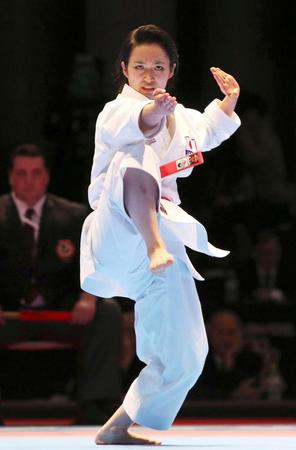
The various techniques are performed in a fixed order, and the duration of the performance ranges from a few 10 seconds to several minutes, depending on the type. Through kata training, karate not only learns the basic techniques and posture of karate, but also is said to be able to acquire the body movements unique to karate that are necessary for practical application to kumite.
By practicing “Kata,” you aim to balance the body and mind, and move the body forward and backward, left and right, up and down almost equally.

There are a lot of kata for karate, and different from school to school. There are differences between Okinawa and the mainland.

Kumite
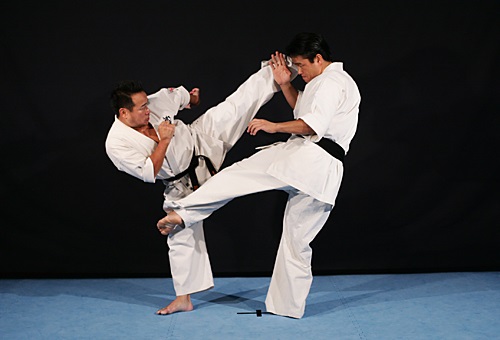
Kumite is a form of practice in which two players practice against each other. There are “a promised gang” in which techniques are exchanged according to a prescribed procedure, “free kumite” in which techniques are freely exchanged, and “team game” in which the goal is to win or lose.

Rank and Colored Belt
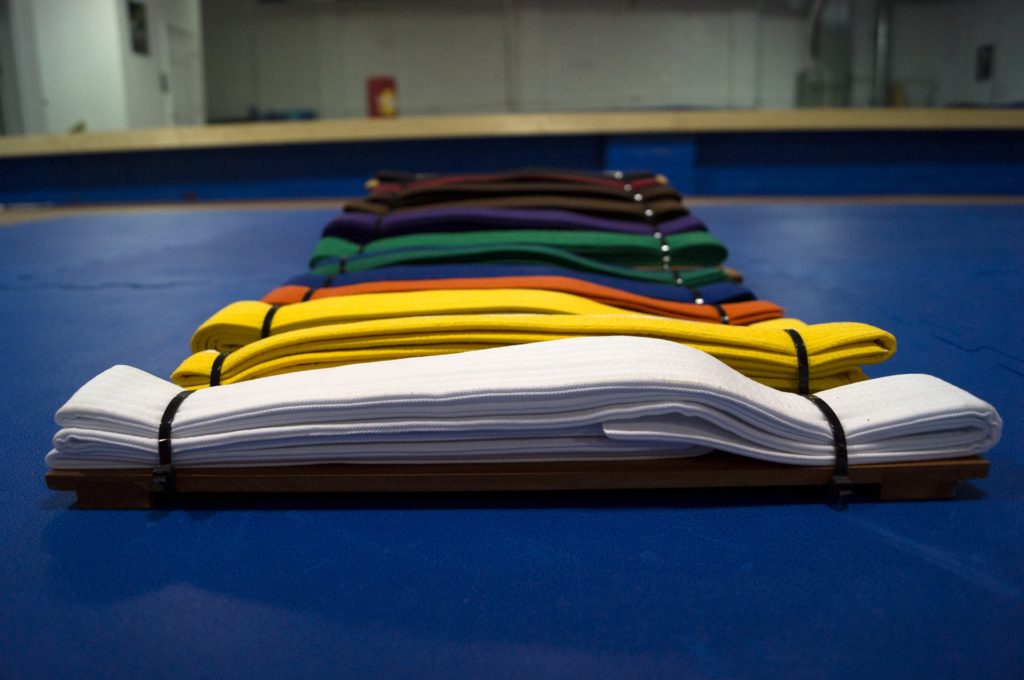
The color of the “Obi” or belt starts from the white Obi when you enter the school, and changes every time you pass the examination.
This is the color and ranking of the belt shown by the Okinawa Karate Association.

Shodan to Godan, Kuroobi
Renshi rokudan indicates a single gold wire on a black belt.
Kyoshi Shichidan has two gold wires on a black belt.
Kyoshi Hachidan indicates three gold wires on a black belt.
Hanshi Kudan indicates four gold lines on a black belt.
Hanshi Judan has five gold lines on a black belt
Qualification Criteria Training at least twice a week
First section: Two years or more
2 dan for 3 years or more, first dan for 1 year or more
Three-dan for 5 years or more and two-dan for 2 years or more
Four-dan: 7 years or more; Three-dan: 3 years or more
Godan 10 years or more — 4 years or more — 25 years or more
Renshi rokudan (sixth dan): 15 years or more; five years or more after the acquisition; 35 years or more
Kyoshi Shichidan 21 years or older, Rokudan 6 years or older, 40 years or older
Kyoshi Hachidan (8 dan) 28 years or more — 7 years or more — 50 years or more
Hanshi Kudan 36 years or older, 8th year or older, 8 years or older, 60 years or older
Hanshi Judan (10th degree) 45 years or more, Kudan (9th degree) 9 years or more, 70 years or more
Manga about Karate
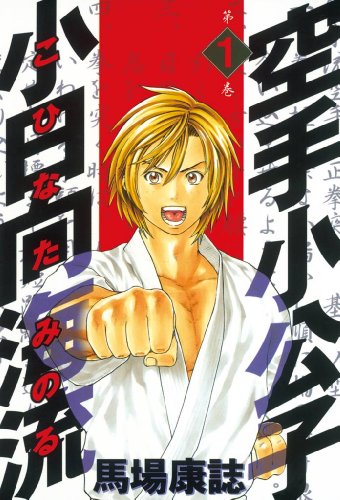
Karate girl “KohinataMinoru” Babyface gymnast Kohinata Minoru, whose Olympic dream has been blighted by bullies, inexplicably joins the Second Karate Club as he has drawn his way into the fighting karate maker Muto Ryuji.
Author: Yasushi Baba
Start of serialization July 2000
Weekly Young Magazine
publisher Kodansha
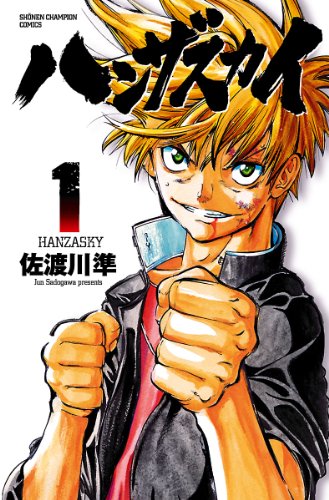
Hanza sky When he was in junior high school、 “Brady Dragon”, Ryunosuke HANZA was feared. He always had fight with other students. Ryunosuke Hanza, longing for love itself, tried to lead a serious high school life, but the
delinquent is aiming at him to foght!! Hanza met Fujiki Honami, karate club member, and fell in love with her ……..!?
Author: Jun Sadogawa
Start of serialization May, 2010
Weekly Weekly Shōnen Champion
PUBLISHING PUBLISHER AKITA SHOTEN

NANOTE YAKAMI STYLE!! This type of jissen karate was handed down to the birthplace of karate, Okinawa. This is a fighting comic which you can feel the depth of karate. techniques.
Author: Yūki Miyoshi
Start of serialization August 1996
Weekly Shonen Sunday
Publishers Shogakukan
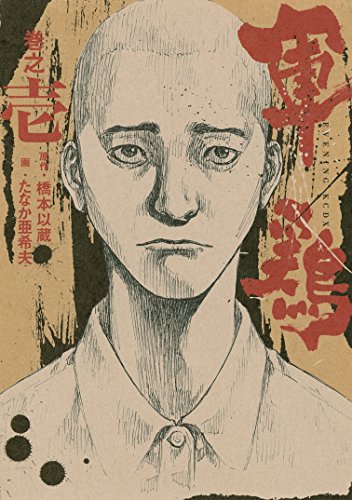
The boy killed his parents. This is because he was obsessed the idea that the clinging affection of his father who is an elite banker and his beautiful mother is sucking up everything from him. The boy met “Karate” at a juvenile training school where he was imprisoned. Author Akio Tanaka
Start of serialization June 2011
publisher Kodansha
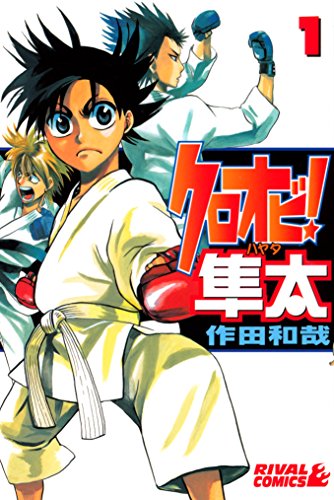
Kuroobi Hayata Those who turn their minds and bodies into weapons: Ikoma Hayata, a boy who longs for the TV hero “Transblade”, meets “Karate”. The first step in getting closer to the person was to cut a board into two in front of him.
Author Kazuya Sakuta
Start of serialization September 2008
Serialized Magazine Boys’ Rival
publisher Kodansha
Rules for Tokyo Olympics 2020

Karatedo was officially adopted at the 2020 Tokyo Olympics.
In the Olympics, kumite and kata competitions are held based on the WKF rules. The adoption of karate for the Olympics was promoted mainly by the WKF (World Karate Federation), a traditional karate organization, and the All Japan Karatedo Federation (JKF).
In the Olympics, kumite and kata competitions are held based on the WKF rules.
In the WKF type rule, the team wins when two players perform the form in order along with the Kumite rule and are judged to be superior.
The competition area is a 8m x 8m mat. If you go outside the area covered by the red matte, you will be penalized (outside the premises).

How to practice the match
1.Both of them go up to the mat together and bow.
2.both go down.
3.The red player (Kiyuna players) enters again, bows and says the name of the mold.
4.The red player does the mold (In this case “Anan”).
5.The red player bows and once goes down.
6.The blue player enters, bows and says the name of the mold.
7.The blue player does the mold (In this case “Chatanyarak Sankou”).
8.The blue player bows and goes down.
9.Align Both
10.Five referees in front of the four corners raise one flag.
11.THE ONE WHO GETS MORE FLAGS WON!! (It’s a 5-0 victory for Kiyuna!!)In this way, two players form in order according to the beauty of style. The decision of victory is left to five judges.
How to judge the match 1.Concordance (Conformance)
2.Technical (Technical Performance)
3.game surface (Athletic performance)
from three perspectives.
Specifically,
1.concordance
Whether or not the original shape and the standard of the school are followed
2.technical aspect
a. How to stand
b. Techniques
c. Flowing Movement
d. Timing/concurrency
Precise method of breathing
f. Extreme
g. Difficulty of the technique
3.game surface
a. Strength
b. Speed
c. Balance
d. Rhythm
Whether you are learning karate or not, please refer to the above and enjoy the karate match at the Tokyo Olympics.
